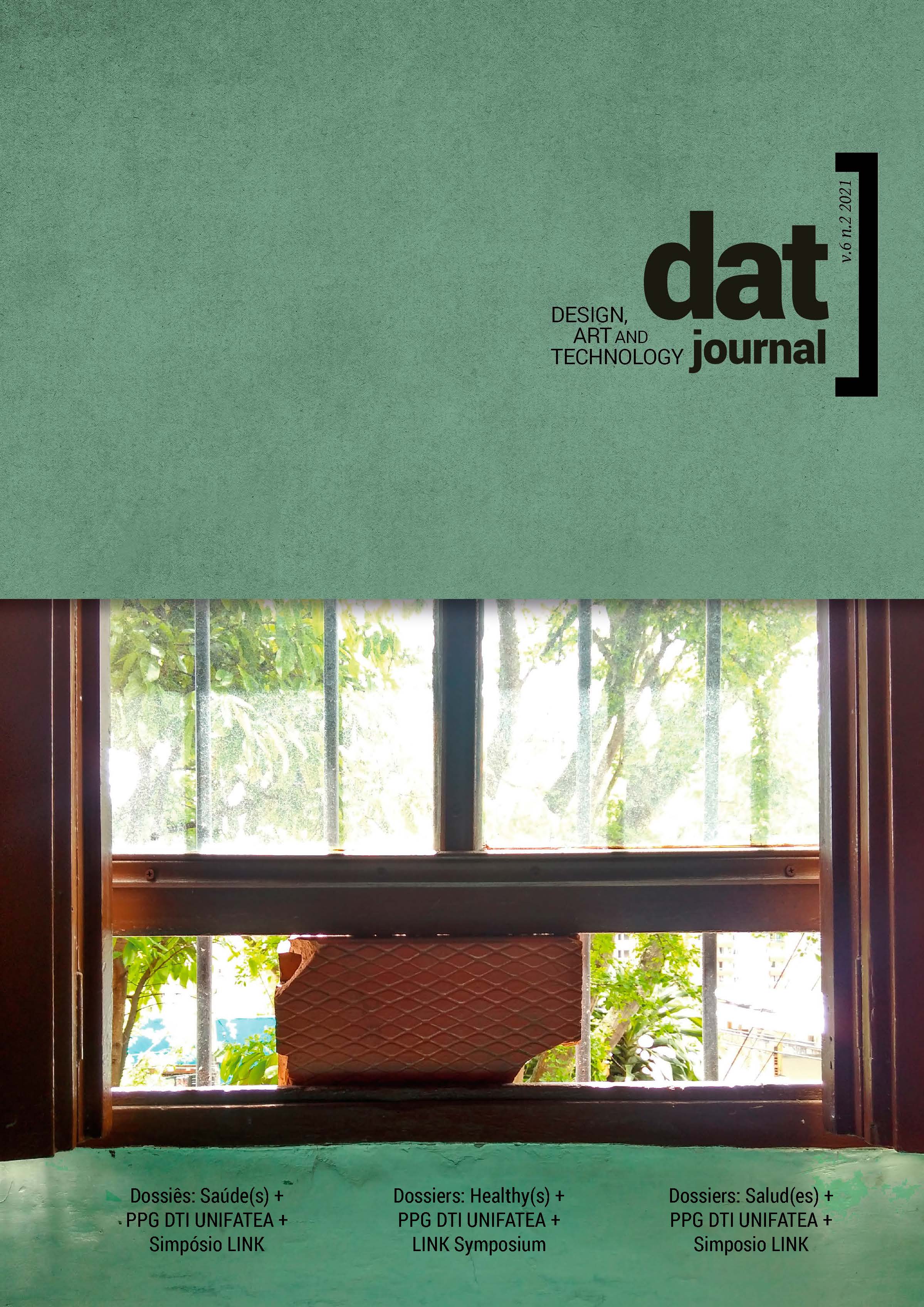La recalibración del plan de estudios de un estudio de diseño durante COVID-19 en Aotearoa
DOI:
https://doi.org/10.29147/dat.v6i2.410Palabras clave:
COVID - 19, Diseño curricular, Educación en diseño, Aprendizaje en línea, Práctica de estudioResumen
Este artículo presenta el impacto que tuvo Covid-19 en la revitalización de un plan de estudios de diseño de comunicación en el primer año con el objetivo de que los estudiantes progresen desde un criterio basado en estándares de nivel secundario a una cultura terciaria basada en estudios de estudio basados en la práctica. experimental. Metodológicamente, describe una intervención de investigación basada en el diseño que pregunta qué sucedió al traducir un informe escrito como un modelo basado en un estudio en una empresa puramente en línea, aprendiendo desde cualquier lugar, enseñando en un estado de cambio constante. A través de un comentario sobre la práctica, la revitalización de un programa de diseño y el cambio pedagógico desde dentro del paradigma tradicional del estudio - un modelo dinámico en el campus, presente en una aventura online abrupta y atípica debido a la pandemia global, este artículo contribuye a un discurso sobre el planteamiento de un estudio de diseño y presenta la transferencia del Sistema de Gestión del Aprendizaje que soporta la educación a distancia.
Descargas
Citas
Anderson, L. W., & Bloom, B. S. (2001). A taxonomy for learning, teaching, and assessing: A revision of Bloom's taxonomy of educational objectives. UK: Longman.
Baumeister, R. F., & Leary, M. R. (1995). The need to belong: desire for interpersonal attachments as a fundamental human motivation. Psychological bulletin, 117(3), 497.
Biggs, John. (2012). What the student does: teaching for enhanced learning. Higher Education Research & Development, 31(1), 39-55. DOI: 10.1080/07294360.2012.642839
Bolstad, R., & Gilbert., J with McDowall, S Bull., A Boyd., S & Hipkins, R (2012). Supporting future-oriented learning and teaching: A New Zealand perspective. Ministry of Education.
Boyd, D. (2016). What Would Paulo Freire Think of Blackboard™: Critical Pedagogy in an age of Online Learning. International Journal of Critical Pedagogy. Vol. 7 No. 1. p. 174-5.
Brown, A. L. (1992). Design experiments: Theoretical and methodological challenges in creating complex interventions in classroom settings. The Journal of the Learning Sciences, 2(2), 141-178.
Collins, A. (1992). Toward a Design Science of Education. In E. Scanlon & T. O'Shea (Eds.), New Directions in Educational Technology (pp. 15–22). New York: Springer-Verlag.
Delors, J., Chung, F., Geremek, B., Gorham, W., Kornhauser, A., Manley, M., & Nanzhao, Z. (1996). Relatório para a UNESCO da Comissão Internacional sobre Educação para o século XXI. Educação um tesouro a descobrir, 6.
Dewey, J. (1937). Education and Social Change. Bulletin of the American Association of University Professors, (1915-1955), 23(6), 472-474.
Drick Boyd (2016) What Would Paulo Freire Think of Blackboard™: Critical Pedagogy in an age of Online Learning, International Journal of Critical Pedagogy | Vol. 7 No. 1, 2016 (p. 174-5).
Ehn, P., & Ullmark, P. (2017). Educating the Reflective Design Researcher. In L. Vaughan (Eds.). Practice-based Design Research (pp. 77–86). London: Bloomsbury Academic. DOI: Retrieved April 12, 2021, from DOI http://dx.doi.org/10.5040/9781474267830.ch-008
Ellis, M., & Grieve, F. (2020, December). Teaching in a State of Flux and Uncertainty: Transitioning the Design Studio during COVID-19. In Link Symposium Abstracts 2020 (pp. 20-21). DOI: https://doi.org/10.24135/linksymposium.vi.5
Freire, P. (2007). Pedagogy of the Oppressed. 30th Anniversary Edition. New York: Continuum Press. Gowing, M., & Brandt, E. (2019). Ficciones Typografika. Sydney: Formist.
Kampen, S. (2019). An Investigation into Uncovering and Understanding Tacit Knowledge in a First-Year Design Studio Environment. DOI: https://doi.org/10.1111/jade.12171
Kirschner, P. A. (2002). Cognitive load theory: Implications of cognitive load theory on the design of learning [Editorial]. Learning and Instruction, 12(1), 1–10. https://doi.org/10.1016/S0959-4752(01)00014-7
Kolb, A., & Kolb, D. (2005). Learning Styles and Learning Spaces: Enhancing Experiential Learning in Higher Education. Academy of Management Learning & Education Vol. 4, No. 2. https://doi.org/10.5465/amle.2005.17268566
Kuhn, G., & Quigley, A. (1997). Understanding and Using Action Research in Practice Settings. Kuhn, G., & Quigley, A. (Eds.), Creating Practical Knowledge through Action Research, (pp. 23-40). San Francisco: Jossey-Bass.
Lourie, M. (2020). Recontextualising 21st century learning in New Zealand education policy: The reframing of knowledge, skills and competencies. New Zealand Journal of Education Studies, 55, 125.
Maslow, A. H. (1962). Lessons from the Peak-Experiences. Journal of Humanistic Psychology, 2 (1), 9-18. DOI: https://doi.org/10.1177/002216786200200102
McPhail, G. (2020). Twenty-First Century Learning and the case for More Knowledge About Knowledge. New Zealand Journal of Educational Studies. DOI: https://doi.org/10.1007/s40841-020-00172-2.
Mortensen Steagall, M., Tavares, T. and Barbosa, N. (2020). Communication Design Department Response to COVID-19: A study for online delivery in Blackboard. Unpublished report.
Wang, F & Hannafin, M.J. (2005). Design-Based Research and Technology-Enhanced Learning Environments. Educational Technology Research and Development, 53(4), 5-23. p. 6).
Wenger, E. (1998). Communities of Practice. Learning, meaning, and identity. USA: Cambridge University Press.


























